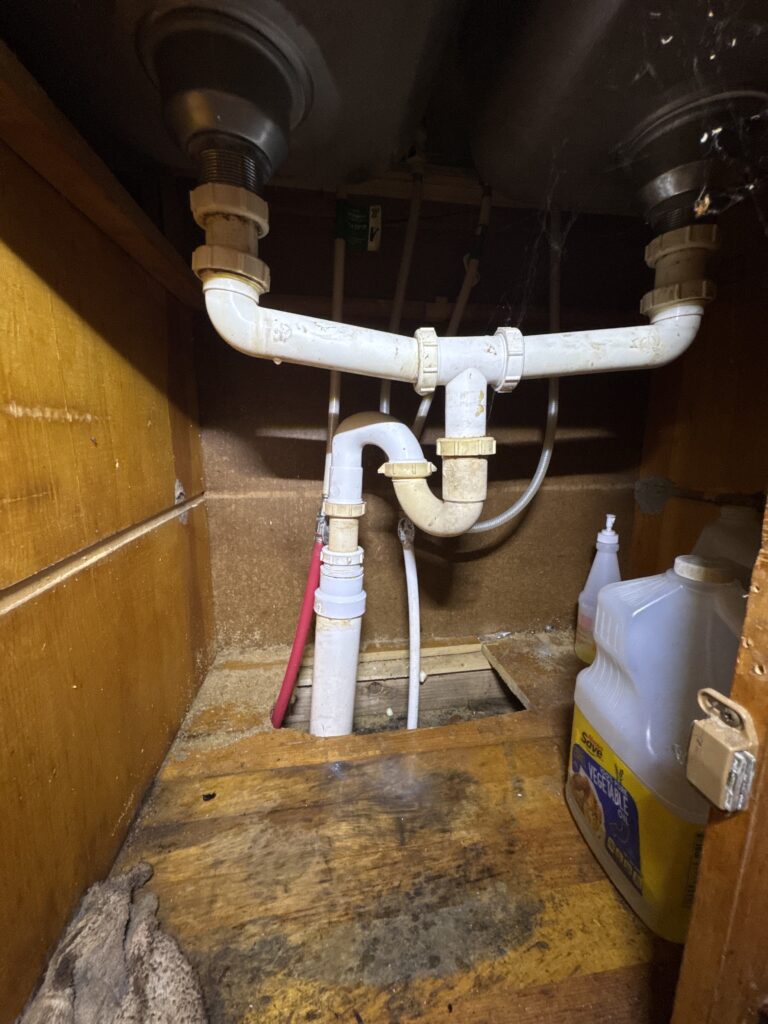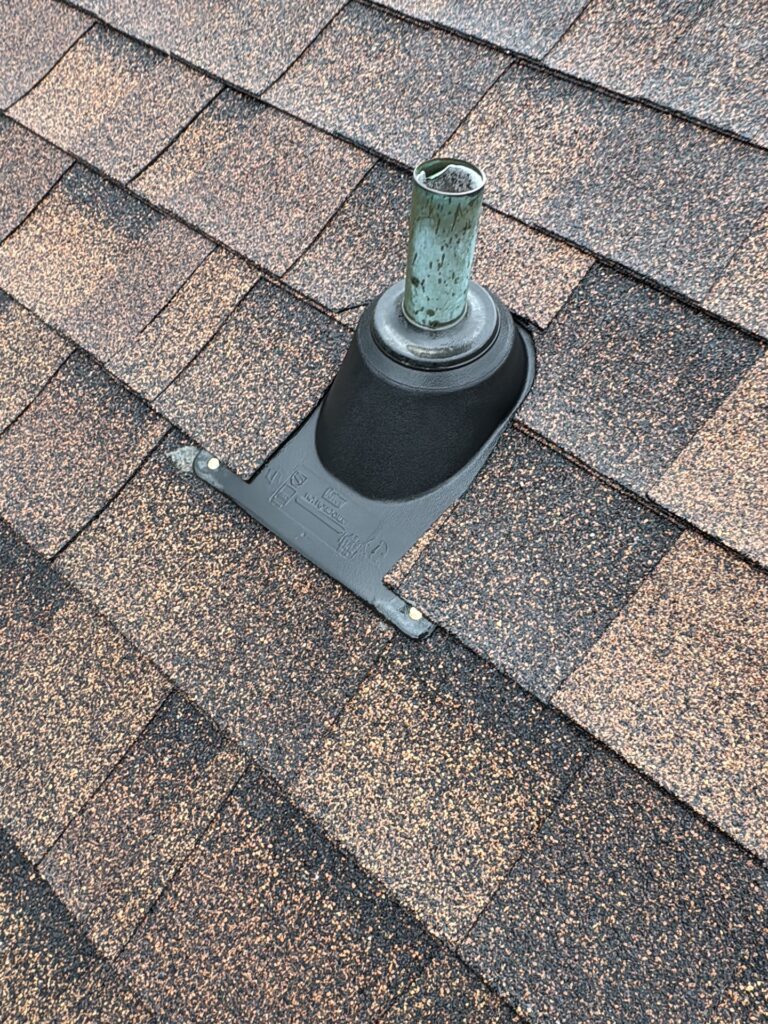Slow sink? It’s probably not the vent. See why a capped, blocked, or unvented line can make a sink drain faster, and why that shortcut backfires.
The Myth: “Bad Venting Makes Drains Slow”
The plumbing vent myth is one of the most common misunderstandings in home plumbing. This one gets repeated everywhere, from plumbers to online forums, and it sounds logical enough. If a pipe needs air to flow smoothly, then a blocked or missing vent must be the reason a sink drains slowly, right?

Not quite.
The purpose of a plumbing vent isn’t to speed up drainage. It’s to protect the water seal inside the trap. That’s the small U-shaped section of pipe under your sink that keeps sewer gases from coming back into your home. The vent’s job is to stabilize pressure so that trap doesn’t siphon dry while the water drains. The plumbing vent myth continues because people often confuse air movement with water flow efficiency.
What a Vent Actually Does
When water flows through a drain line, it pushes air ahead of it and creates negative pressure behind it. Without a vent to equalize that pressure, the system starts pulling air from anywhere it can, including through the water in the trap. That’s what causes gurgling, oscillating water levels, and in some cases, a completely dry trap.
A properly vented fixture allows air to move freely, preventing that vacuum effect and keeping your trap water right where it belongs. The plumbing vent myth often overlooks basic physics. Air pressure, not gravity, determines how the system balances flow.
If you’ve ever heard a sink gurgle after draining, that sound is air fighting to get back into the line. It’s a small example of pressure imbalance, and it shows why proper venting is essential for the system to function quietly and consistently.
The Backwards Truth: Unvented Drains Often Drain Faster
Here’s the twist. In many real-world tests, including those demonstrated by Reuben Saltzman with Structure Tech, an unvented, blocked, or poorly vented sink can actually drain faster.
That’s because the lack of venting creates a siphon. The water column pulls itself through the pipe using its own weight, moving faster than a vented line where air slows things down slightly.
Sounds great, right? Until you realize that same siphon is also pulling the water out of your trap, leaving nothing between your home and the sewer gases below. This is where the plumbing vent myth tricks people… speed doesn’t mean efficiency.
So yes, a capped, blocked, or unvented line might make a sink drain faster, but it’s the plumbing equivalent of cutting your brake lines so your car rolls downhill easier. It will move fast, but you won’t like where it ends up.
Plumbing Vent Myth vs. Slow Drain Reality
Slow drainage usually comes from physical obstructions, not venting problems.
Here’s what’s actually behind most slow drains:
- Debris, hair, buildup inside the trap arm
- Poor pipe slope or “bellies” holding water
- Pop-up stoppers or debris around the drain opening
- Double traps or improper fittings restricting flow
A completely blocked or missing vent can cause gurgling or cross-fixture issues (like the tub gurgling when the toilet flushes), but it’s rarely the reason for one slow sink.
To test venting issues correctly, plumbers often perform smoke or air pressure tests to see if vents are blocked or improperly configured. This ensures that the problem isn’t a design flaw rather than an obstruction.
Code and Function Reality Check
According to every modern plumbing code, vents are required to protect trap seals from siphonage and backpressure, not to speed up flow.
Even when air admittance valves (AAVs) are used, their purpose is to let air in, not push water out. They prevent that vacuum from forming in the first place.
Section 1002.2 of the International Plumbing Code (IPC) clearly states that each fixture trap must be protected against siphonage and backpressure. That’s why vent placement, pipe diameter, and slope are all critical in a properly engineered system.
So if you’re ever tempted to cap a vent or install an S-trap because it “drains faster,” remember, faster isn’t the goal. Balanced is.
Inspector’s Takeaway
At Actuate Inspections, we regularly encounter S-traps, flat trap arms, and capped or blocked vent stubs during inspections across Northeast Arkansas. These setups might look fine to the untrained eye, but they all share one problem, they risk losing that trap seal.
As a home inspector, my job isn’t to fix these issues but to document them before they become your problem.
If you see signs like gurgling, odors, or creative plumbing under a sink, have a qualified plumber review it before you’re left wondering why your bathroom smells like a sewer.
Related reading on our site: learn more in our post about sewer line inspections and when a sewer scope makes sense.
For external insight, check out Structure Tech’s explanation of plumbing vents, which demonstrates the same concepts in action.
Homeowner Takeaway: How to Spot Venting Issues Early
You don’t need specialized tools to notice symptoms of venting problems. Look and listen for these:
- Gurgling after a drain empties
- Odors near a sink, tub, or laundry drain
- Water in a trap disappearing between uses
- Fixtures that bubble or backfill when another drain is used
If any of these sound familiar, it’s time to call a qualified plumber. Proper venting isn’t just code… it’s the key to a quiet, odor-free plumbing system. Understanding the plumbing vent myth helps homeowners recognize what’s really going on before it becomes costly.
Conclusion
Plumbing vents don’t make drains faster, they make them work correctly. The vent’s purpose is balance, not speed. The plumbing vent myth proves that not every “faster” fix is a better one.
So the next time someone tells you a slow sink means a bad vent, you can confidently tell them, “Actually, that’s not how it works.”
